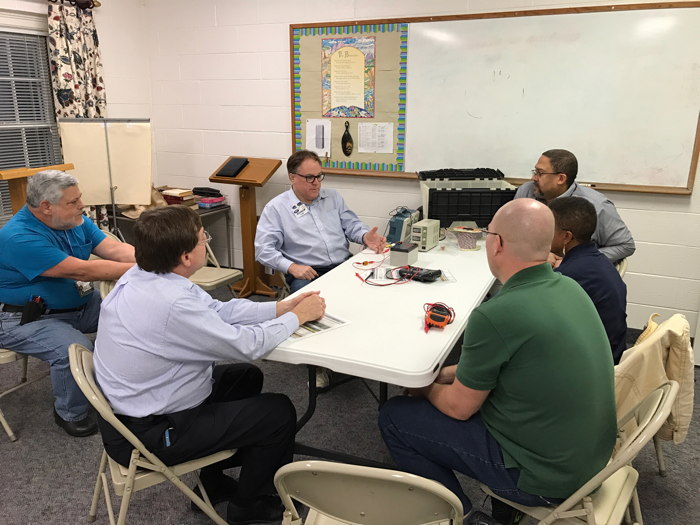New Ham Meetings
From March 2015 to March 2020, KA2DEW and several helpers ran a meeting specifically aimed at doing hands-on practical lessons toward building and operating a ham station. We had between an hour and an hour and a half to set-up, do a lesson, and tear it down. From all accounts, it worked swimmingly. I highly recommend doing this at every ham club. In March 2020 the venue we were using shut down due to COVID19 and 2 years later when the club voted to start in-person meetings again KA2DEW started something new which will be documented on these pages sometime soon.This page talks about what the new ham meeting is about.
Everybody who is an experienced ham should know certain things about creating and running a ham station in each of the different environments, portable, mobile, fixed station, VHF HF. The different power environments, antenna mounting and usage environments and feedlines. Tools should be acquired and other tools should be well sourced, i.e. know who to borrow them from, and the ham should have experience supporting and starting a group activity. New hams need not start with knowing any of these things. It is the goal of the new ham meeting to present and provide experience in each of these topics. Ideally, after each cycle of the new ham meeting curriculum, all new hams become experienced hams and can then assist in the running of the new ham meeting. However, hams will probably not attend all lessons and may not get as much out of the lessons as we'd like but there is nothing stopping anybody from attending lessons more than once. Some new and experienced hams will find the new-ham meeting to be more enjoyable than whatever else the club would do during monthly meetings. A club wishing to implement new ham meetings should create web pages giving contact info, lists of sources, links related to the above sessions, lists of nets, repeaters accessible from the club's area of interest. The lessons get repeated periodically. The plan is that people are only "new hams" for a year at which point they are helping with the lessons and eventually leading the program. The club should budget $300 or so per year for materials so new hams can take their cables and whatnot home. Also we need antennas, trivial SWR meter, hand tools, power strips, soldering stations and supplies for soldering. This will take a couple of 10 gallon storage bins for materials.Here are some example curricula.
- HTs - demonstrate front panel programming, talk about repeater splits and duplex, demonstrate desense
- Build RG8X coax jumpers with crimp-on-and-solder PL259 connectors.
- Build 2m 1/4 wave antennas from romex copper wire, heavy copper wire, and so239 chassis sockets. Use old-school Heath kit SWR meter to tune. If time, build a wire 2-element yagi. Demonstrate directionality with field strength meter.
- Use Heat Shrink to make and splice DC and AC cables.
- Assemble a soldered kit from parts and instructions. Everybody gets to put a part or two in. Hopefully bring several soldering stations and a few helpers to do hands on.
- Make powerpole jumper cables. Bring in multiple sets of tools, 16 gauge wires. 3' jumpers
- Use Larson or Motorolla hole punch to mount an NMO antenna on a car. Using same or differnet car show how radio connects to battery and antenna. Trunk mount radio. With enough attendees we can get several ideas for mounting radios.
- bring in example power supplies, switcher and 35amp linear. Power up a 100watt FM transceiver (used an HF rig that had full power FM) and show voltage drop, warm wires. Used multiple gauges of wire and powerpole jumpers.
- Volt Ohm Meters. Demo measuring current, continuity. Bring in some RG8X jumpers with interesting defects to use in testing continuity and shorts. Box of unsorted resistors. Good and weak primary Batteries and LEDs and hookup wire. Test 110VAC and batteries.
- Repeater and HF net operations, traffic net, emergency net, rag-chew nets. Simulate an emergency net with hams present. Hand out sample sheat for info read at start of the net. List of frequencies and repeaters.
- Use oscilloscopes to analyze a broken 12v linear power supply (capacitor disconnected or leaked out). Watch audio tones. See clipping.
- Talk about vanity callsigns, rules, show web sites to assist.
- Show a dozen different 2m antennas including ducky, telescoping HT antenna, cheap magnet mount, Better magnet mount, NMO, UHF and 3/8th-24 mounts, vertical dipole, short yagi, several japanese antennas, J-pole, home-brew corner reflector and ground plane. Discuss gain, directionality, horizon, vertical, horizontal, software
- Set up 8' high 40m full size coaxial fed dipole with W2AU balun between two trees or whatever is convenient. Be safe and show good practices. Use Icom IC735 (no DSP, solid state) radio on Gel-Cel and make contacts on 40m. Make contact and then pass the microphone around. Discuss control operator, license classes, NVIS 40m.
- Demonstrate repeaterbook application on web-browser, cellphones. Talk about coverage. Look at various club's repeater lists.
- Talk about Worked All States, DXCC, Logbook of the World, QSL cards, QSL managers, QSL Bureaus.
- Show video of satellite contact and ISS Slow Scan reception. Show the equipment used and set up a satellite pass for a demo at a separate time.
Establish a web site giving contact info, lists of sources, links related to the above lessons
Building coax jumpers
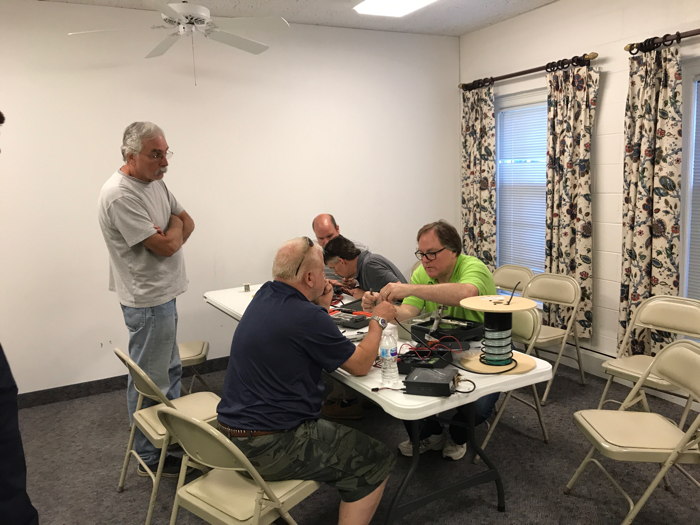 Drilling an NMO antenna mount in a perfectly good car
Drilling an NMO antenna mount in a perfectly good car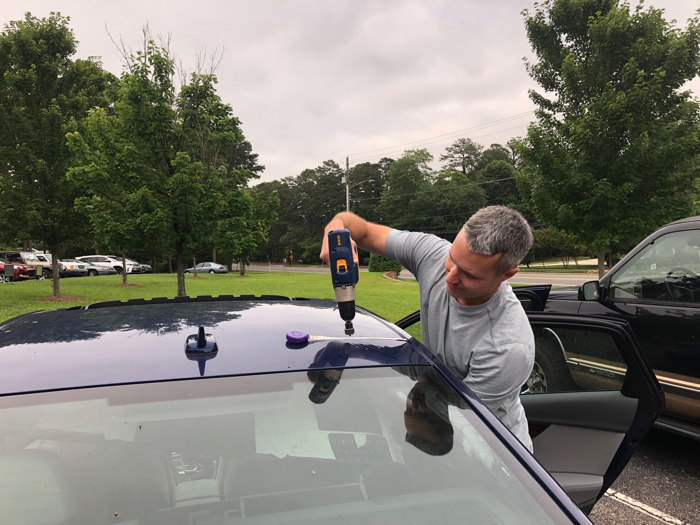 KG4AKV showed a youtube video of working an FM satellite, then showed us the equipment used.
KG4AKV showed a youtube video of working an FM satellite, then showed us the equipment used.
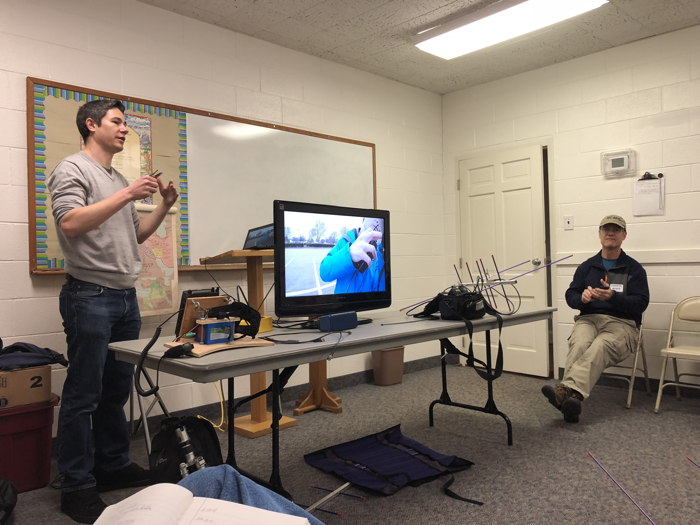 KM4DVE put up a 40m dipole for a G-O-T-A session
KM4DVE put up a 40m dipole for a G-O-T-A session
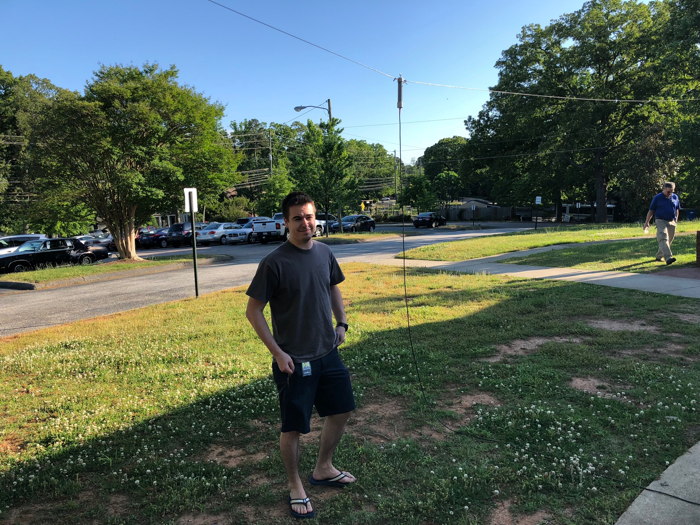 KA2DEW did a tour of a typical control-head-VHF radio mobile install.
KA2DEW did a tour of a typical control-head-VHF radio mobile install.
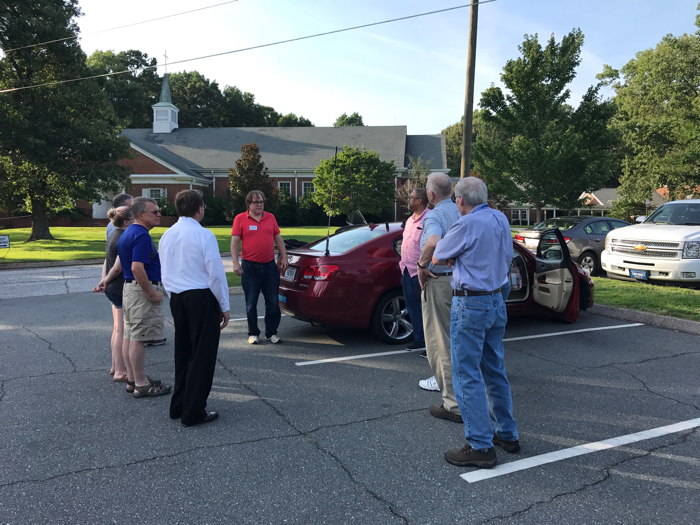 Everybody Gets On The Air outside the meeting location
Everybody Gets On The Air outside the meeting location
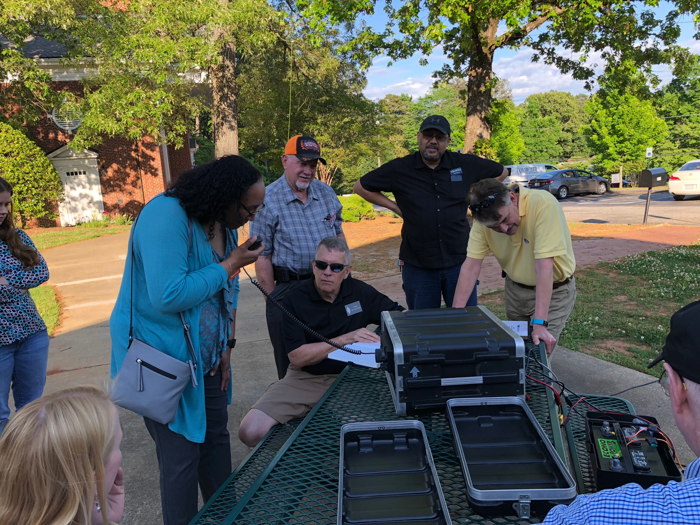 Exploring crimper tools and crimped connectors.
Exploring crimper tools and crimped connectors.
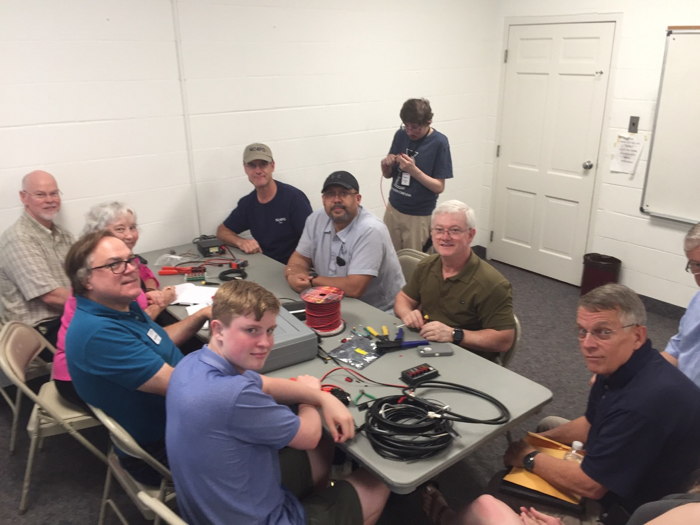 N4TL did a discussion on earning and receiving awards for making contants on HF including WAS DXCC.
He also discussed sending and receiving QSLs and using Logbook Of The World.
N4TL did a discussion on earning and receiving awards for making contants on HF including WAS DXCC.
He also discussed sending and receiving QSLs and using Logbook Of The World.
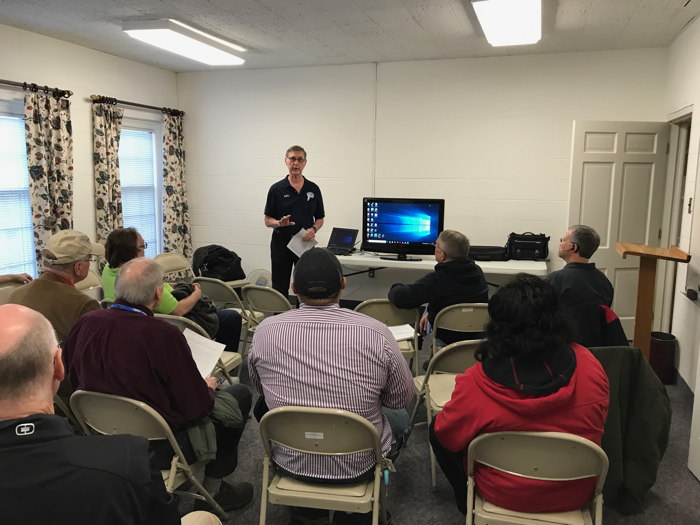
We built quarter wave ground planes and used a Heathkit SWR meter measure them and help in trimming the antennas.
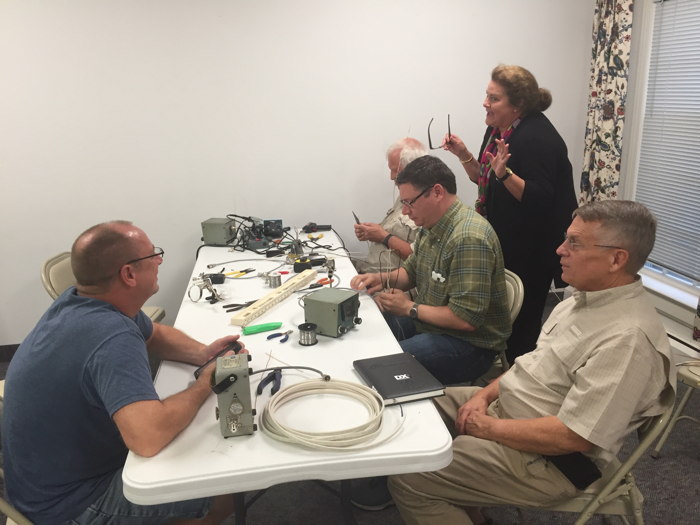
Using a battery, power supply, resistors, various wire types we measured noise, voltage, current and resistance using a scope and a Volt Ohm Meter.
